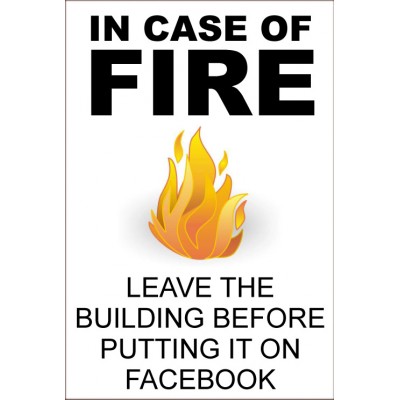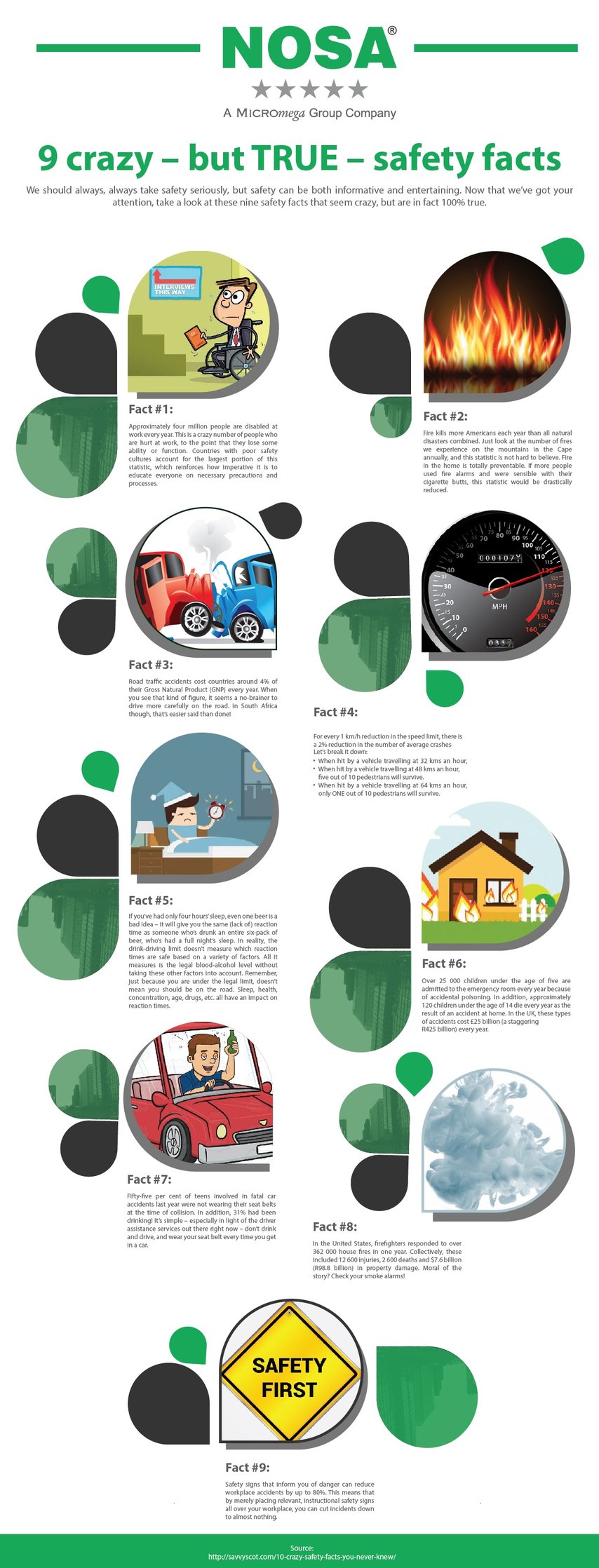| We should always, always take safety seriously, but safety information can be both informative and entertaining. Now that we’ve got your attention, take a look at these nine safety facts that seem crazy, but are in fact 100% true. |  |
Fact #1: Approximately four million people are disabled at work every year
This is a crazy number of people who are hurt at work, to the point that they lose some ability or function. Countries with poor safety cultures account for the largest portion of this statistic, which reinforces how imperative it is to educate everyone on necessary precautions and processes.
Fact #2: Fire kills more Americans each year than all natural disasters combined
Just look at the number of fires we experience on the mountains in the Cape annually, and this statistic is not hard to believe. Fire in the home is totally preventable. If more people used fire alarms and were sensible with their cigarette butts, this statistic would be drastically reduced.
Fact #3: Road traffic accidents cost countries around 4% of their Gross Natural Product (GNP) every year
When you see that kind of figure, it seems a no-brainer to drive more carefully on the road. In South Africa though, that’s easier said than done!
Fact #4: For every 1 km/h reduction in the speed limit, there is a 2% reduction in the number of average crashes
Let’s break it down:
- When hit by a vehicle travelling at 32 kms an hour, nine out of 10 pedestrians will survive.
- When hit by a vehicle travelling at 48 kms an hour, five out of 10 pedestrians will survive.
- When hit by a vehicle travelling at 64 kms an hour, only ONE out of 10 pedestrians will survive.
Fact #5: If you drive after being awake for 24 hours, your response times are as bad as someone who is over the drink-driving limit
What’s more, if you’ve had only four hours sleep, even one beer is a bad idea – it will give you the same (lack of) reaction time as someone who’s drunk an entire six-pack of beer, who’s had a full night’s sleep. In reality, the drink-driving limit doesn’t measure which reaction times are safe based on a variety of factors. All it measures is the legal blood-alcohol level without taking these other factors into account. Remember, just because you are under the legal limit, doesn’t mean you should be on the road. Sleep, health, concentration, age, drugs, etc. all have an impact on reaction times.
Fact #6: Fifty-five per cent of teens involved in fatal car accidents last year were not wearing their seat belts at the time of collision
In addition, 31% had been drinking! It’s simple – especially in light of the driver assistance services out there right now – don’t drink and drive, and wear your seat belt every time you get in a car.
Fact #7: In the United States, firefighters responded to over 362 000 house fires in one year
Collectively, these included 12 600 injuries, 2 600 deaths and $7.6 billion (R98.8 billion) in property damage. Moral of the story? Check your smoke alarms!
Fact #8: Over 25 000 children under the age of five are admitted to the emergency room every year because of accidental poisoning
In addition, approximately 120 children under the age of 14 die every year as the result of an accident at home. In the UK, these types of accidents cost £25 billion (a staggering R425 billion) every year.
Fact #9: Safety signs that inform you of danger can reduce workplace accidents by up to 80%
This means that by merely placing relevant, instructional safety signs all over your workplace, you can cut incidents down to almost nothing.
Visit SafetyCloud for world-leading occupational health, safety, and environmental training in South Africa.

And just for a little fun…
Check out these funny (but often on point) safety warning signs from around the world.

Source:






